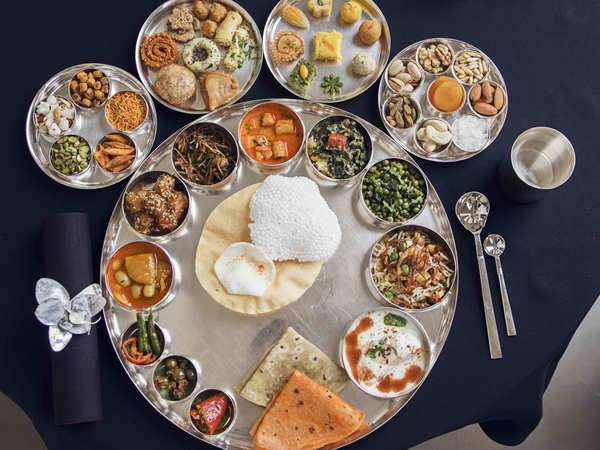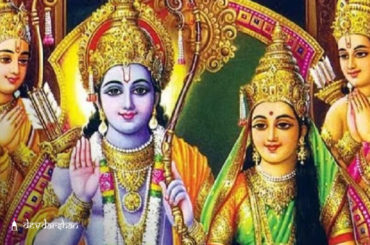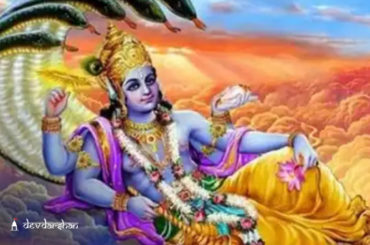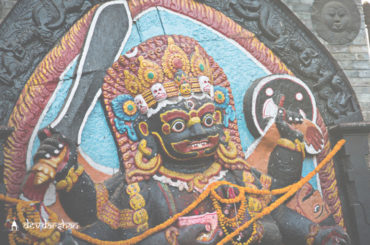‘Bhog’ literally means offerings or blessings. Bhog offering is conducted for the spiritual consciousness of an individual. In the path of devotion and spirituality, Bhog is offered more as a form of love, gratitude as well as blessings. Offering bhog to the deities has great significance in any kind of worship in Hinduism, without which the worship remains incomplete. Thus, the bhog offering makes a puja complete.
Things to Keep in Mind While Preparing Bhog Offering
- The first and most important thing to keep in mind while preparing the Bhog Offering is that only Satvik or vegetarian food should be offered to the Lord as Bhog.
- The devotees have to make sure that the bhog doesn’t contain any kind of animal meat since the offerings should be far away from pain and cruelty.
- The preparation of the Bhog Offering should take place in a clean environment, with fresh and clean ingredients and with a pure and stable heart and mind since a combination of these is believed to increase the ‘Satva’ Guna in the food.
- To receive greater benefits from the offering of bhog, the devotees preparing it should be in a peaceful, calm and contemplative mind state since the act is performed for satisfying God.
- Food items like onion, garlic and vegetables like mushrooms are restricted in the offering. It may differ from religion to religion.
- The bhog should be offered to the Lord in a new and clean utensil. That utensil shouldn’t be used for any other purposes. The devotees should clean the puja place first before offering the bhog. The bhog shouldn’t be kept on the ground. It should be kept on a piece of cloth or a small podium
- The devotees shouldn’t taste the food before offering it to the Lord. The divine God should be the first one to taste the fruits of our labour. The preparation of the Bhog Offering should be done without any selfish motive, with only one thing in mind i.e. to satisfy the almighty.
Find out What Special Bhog is offered to Lord Vishnu in Satyanarayan Vrat
Types of Bhog Offerings as Per Timings
- Morning Bhog/Mangal Bhog: The deities are offered the first meal of the day as the bhog in the morning around 4 a.m, which consists of kheer, fruits, butter, milk, sweets and a few other items.
- Raj Bhog: The main meal of the day for the supreme deity is the Raj Bhog which is offered at noon. In this offering, the Lord feasts like a king. This meal consists of rice, a variety of vegetables, sweets, pulses and cereals, poori, juice, salads and many more dishes.
- Evening Bhog: Bhog Offering to the Lord at dusk, this meal consists of Poori, sabzi, rice, pulses and cereals, sweets, etc.
What is Chappan Bhog Offering and What is Its Significance in Hinduism?
Chappan Bhog is an offering to the Lord in which people offer a list of 56 items together. The word ‘Chappan’ means 56 and ‘Bhog’ refers to food. Curious to know why there are 56 items specifically?
Legend says that Lord Krishna had lifted the Govardhan Parvat to save his village and villagers from the wrath of The Rain God (Lord Indra). Lord Krishna lifted the huge Govardhan Parvat and held it at the tip of his little finger under which all the people took shelter. He stood in the same position for seven days in a row until Lord Indra realised his mistake. Generally, Lord Krishna consumes 8 food items every day but he didn’t eat anything for those seven days. Therefore, at the end of the seventh day, everyone offered a total of 56 dishes (8 items each day × 7 days) to Lord Krishna out of happiness and gratitude. The 56 bhog generally consists of the favourite items of Lord Madan Mohan such as cereal, fruits, dry fruits, sweets, drinks, namkeen and pickles in quantities of seven under each category.
Know What is offered on Krishna Janmashtami to Lord Krishna
List of Unique Hindu Bhog Offerings
- Panchamit Bhog Offering: This auspicious bhog is prepared by mixing 5 items: milk, honey, ghee, curd, sugar/jaggery. This is considered one of the most basic Naivedyam out of the 9 types offered to the Lord.
- In the Southern states, the deities are offered with Pulihora which means tamarind rice, Sakkarai Pongal which means sweet rice, Pongal which means rice mingled with moong daal and added with pepper powder, and the most famous Tahir Sadam i.e. the curd rice as Bhog Offering. In large temples like the Tirupati Temple, the Lord is offered with Vada and Laddu.
- Modak or Laddus: These are sweets which are said to be the favourite food of Lord Ganesha. Modaks are generally available in various flavours and shapes.
- Kheer – Kheer is a delicacy loved by most of the deities as per the Puranas. Kheer is a bhog preparation made out of rice, sugar and milk.
- A number of milk products such as Makkhan i.e white butter, Butter Shrikhand, etc. are widely offered to Lord Krishna. While preparing the Bhog Offering for Lord Krishna, the devotees should never forget to add Tulsi as an offering since it has special significance.
- Besides these, any kind of sweets, fruits and dry fruits can be offered to God in general.
Check out various Online Puja and services provided by DevDarshan here and get your bookings done in one click. If you want to know more about Indian culture, Indian Temples, Pujas and festivals, then download the DevDarshan App. Don’t forget to share this blog if you liked it.




